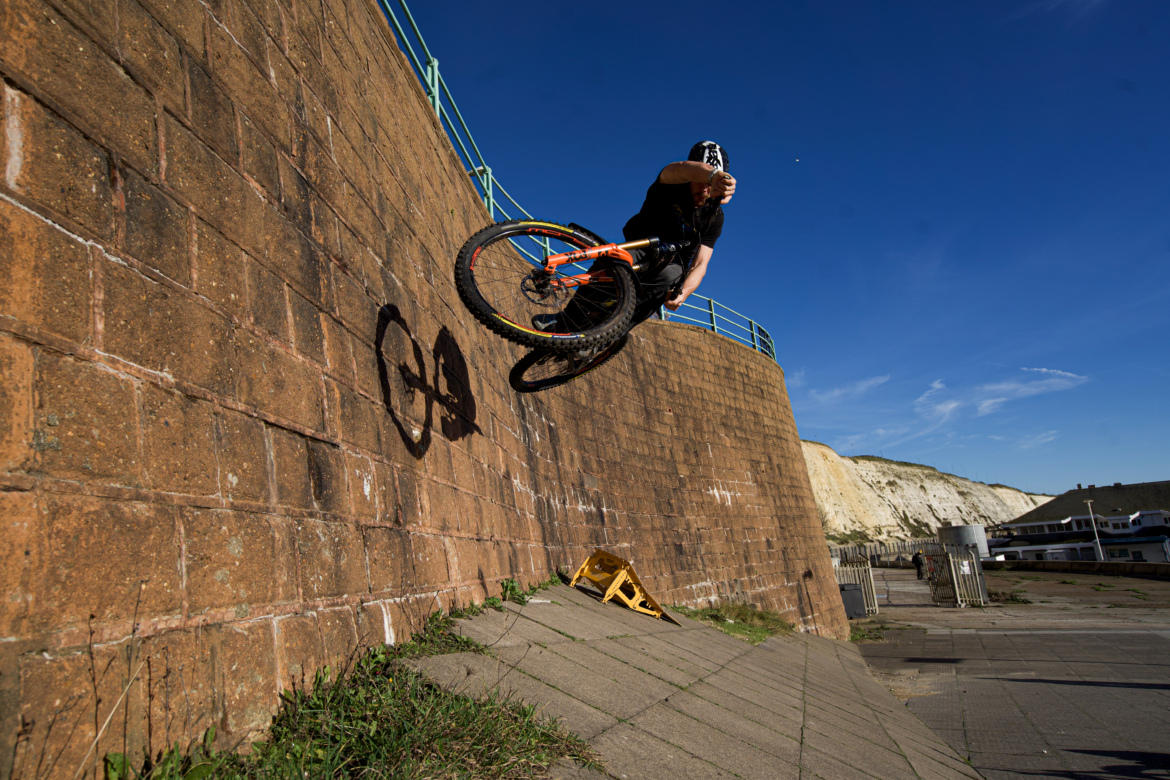
If you want to get better at jumping, or you’re trying to progress your riding without a mountain in sight, this episode is for you. Tadas Puodžiūnas is the founder of MTB Hopper, a Lithuanian company that designs and sells portable bike ramps.
- What was it like learning to mountain bike in Lithuania?
- How did the idea for MTB Hopper come about?
- Do you think growing up in a flat place gave you any advantages as a rider?
- Why is it generally easier to follow someone into a jump than to try it solo?
- How do you figure out how much speed you need to clear a jump?
- Is there a good way to ‘test’ a jump without hitting it full-send the first time?
- How much suspension travel do you really need for small to medium-sized jumps?
- How do MTB Hopper ramps help with that progression? And how do they compare to DIY setups?
- Are there any MTB trails in Lithuania you could recommend for someone visiting the country?
Never Miss an Episode
- Listen on Spotify
- Listen on Apple Podcasts
- Listen on Google Podcasts
- Listen on Stitcher
- Listen on Overcast
- Get the RSS Feed
- View all Podcast Episodes
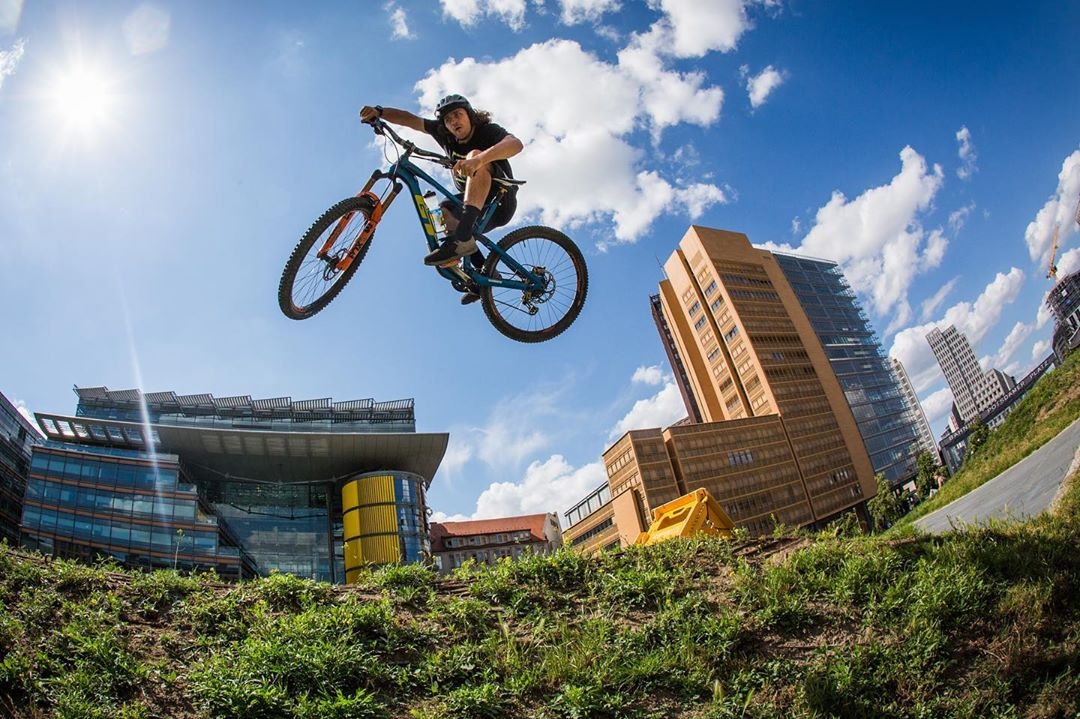
Automated transcript
Jeff Barber 0:00
Hey everybody, welcome to the Singletracks podcast. My name is Jeff, and today I’m excited to talk with Taras Puodžiūnas, the founder of MTB hopper. If you want to get better at jumping, or you’re trying to progress your riding without a mountain in sight, this episode is for you. Tadas has a super unique perspective on mountain biking. He grew up in Lithuania, which is pretty flat, and he’s built a company around helping riders learn to jump and progress their skills in a safer, more repeatable way. We’re going to get into how to figure out the right speed for a jump, how much suspension you really need, and why following someone into a jump often feels easier than going it alone. Tatos, welcome to the podcast. It’s
Tadas Puodžiūnas 0:43
a great honor to having me here. Thank you very much for inviting
Jeff Barber 0:47
Awesome. Well, let’s start at the beginning. So as I mentioned, Lithuania isn’t exactly known for its big mountains. So what was it like learning to mountain bike there?
Tadas Puodžiūnas 0:59
Yeah, actually, it was very interesting, because we don’t have a lot of landscape and terrain. Many mountains we have hills, so rubble elevation will be around 300 feet. So okay, you’re very decent, yeah,
Jeff Barber 1:19
but not Yeah, not a lot,
Tadas Puodžiūnas 1:20
yeah, tight spaces on slope. So actually at that time, it was very few trails so and it was kind of difficult to get more jumps speakers, but not much we were learning how to shovel them, to build them, etc. So
Jeff Barber 1:44
this is a lot of work to build a dirt jump, right? Absolutely. So, I mean, most people, you’d, you’d use equipment, but I assume you guys didn’t have equipment. You’re using shovels.
Tadas Puodžiūnas 1:54
When we’re just starting here, we’re just shoveling, you know, shaping and, etc, yeah. So it really big heads up for the trail builders, what they’re doing, how they show their creativity, how they employ Yeah. So, yeah,
Jeff Barber 2:12
yeah, cool. And so you were, I guess, as a young person, like, how old were you when you were starting to get into mountain biking and wanting to learn how to jump.
Tadas Puodžiūnas 2:23
Yes, it’s around around two. I was starting when I was a kid. But like, okay, look at this more seriously, when it was like, around 20, maybe 25 years old, okay, and I was riding more like cross country, and I understood that I like more enduro more like a downhill activity, yeah, yeah. Wanted to evolve into more gravity sports. And,
Jeff Barber 2:54
yeah, yeah, that’s cool. So how did the idea for MTB Hopper come about come out of all of this?
Tadas Puodžiūnas 3:02
Yeah. So mainly idea come out from our main designer, who was came up with that idea. So we have here not much, as I mentioned, trails at that point. And we were looking for how to gain the skills, because sometimes to get getting to the mountains, you are having quite a lot of challenges, to take bigger kickers or drops and to actually not willing to sacrifice, you know, health and all the things take not much risk, Right on. So we should understand the forces and jumping techniques. And we came up with the idea how to train in a safe environment. So we came across of the concept with portable ramps. Okay, so, so the idea was to implement this into terrain, into the trails, into different scenarios, and have more air time, because the air time is essential on the leap of learning so and to understand the dynamics you know so right, repetitive work, you are gaining more airtime, understanding what is behind, discovering more scenarios, like drops, like step ups, like everything, like long jumps, area jumps and etc,
Jeff Barber 4:38
yeah. And so did you start out with, like prototypes, like you and your designer? Were you just kind of building these with wood, like people would do, kind of on their own, like backyard style jumps, but maybe a little more sophisticated,
Tadas Puodžiūnas 4:52
classical beginning. It’s like, how DIYs do so with the same. Right, yeah. So we have started and we did a lot of mistakes. We have tested a lot of things, and we understood from from our mistakes, what to improve and how to build the ramps, yeah. And the key thing was portability. We understood that you need to go to different places and try different scenarios. And as well, you need to find right angles, because the ramps are quite small objects, right and the feeling like natural feeling what you have in just regular trails, in the kickers, they are different. They are quite bigger. So we were looking for the perfect feeling that you should have natural speed, okay, confidence when you’re hitting the ramp and you feel like it should be with a natural speed.
Jeff Barber 5:55
Okay, what are some mistakes? I guess that that people who, like, if you’re just a kid and you’re building your own ramp, like, what? What do people usually do that’s wrong? Like, I remember when I was a kid, you know, we would ride in the street and we would build ramps. We get a piece of, like, plywood, small piece of plywood, and prop it up with like, a log or something like, that’s, that’s about as basic as it gets, right. So, like, yeah, what’s wrong with that setup, I guess, compared to maybe
Tadas Puodžiūnas 6:25
main designer has broken the leg, that kind of experiment? Oh, no, yeah. Like, and from that point, we have started to think you know how to improve and how to do it better. So most of what I see from the DUIs, everybody’s choosing, like laminated plywood, and it is very slippery, if conditions, if you are just riding with wet tires, so then it’s very dangerous, yeah, yeah. So we have noticed when you have just like DIY ramp, it’s very difficult to transport somewhere. And also, if you want to just adjust it on the flat ground, for example, just like on the flat grass, yeah. So, and also that grass is not totally flat, so you need to take a shuffle and good, you know, work to adjust it, yeah. So stability is also very important here,
Jeff Barber 7:27
right, right, yeah, yeah, I guess, because I was doing it on a street, which is okay, but that’s not good for when you do ultimately crash. So, yeah, it’s better to probably do it on the dirt and to have it adjustable it sounds like so do you think sort of growing up in a flat place gave you any advantages as a rider?
Tadas Puodžiūnas 7:50
I think so. I believe the creativity is the key here, because when you don’t have much trails, you need to be very creative. And the great is, you know how you can train, how you can your skills. You know how to find spots, how to replicate. You know some moves. You know how to understand model positions, all the things right, and this is very important in in terms of the safety. So as much you have air time and as much you are practicing, then safer you are. You understanding how to come from the bike, if you just gone into a sketchy, you know, a situation and so on. So this is very important things. So we came across about safety, about the repetitive trainings, you know, and we just starting, you know, to understand, you know, the needs of every type of the rider, of the skill set and etc. Yeah, that makes sense. There’s also in different terrains, like asphalt is another thing you know, if you’re just practicing urban or if you are trying to incorporate on sandy terrain or on the grass, on the rocks, on uneven terrain. So this is also very important, because when terms of the perspective, when you’re practicing, you will be facing those different terrains and right, definitely, you need to have quite good adjustability.
Jeff Barber 9:13
Yeah, yeah. And it sounds like you’re saying too that, like if you live somewhere where there aren’t a lot of big mountains, or, you know, a lot of trails, you have to be very intentional about riding and training, especially whereas, you know, if you have access to trails, you can go out and just ride them, and, you know, you’ll, you’ll kind of get better. But if you’re intentionally working on it, kind of at home, it seems like that’s, that’s a really good opportunity. But
Tadas Puodžiūnas 9:40
sometimes, sometimes, what I have noticed, and also from our practice, that sometimes, even if you are in the trails, because we’re traveling quite a lot, and we have seen a lot of bike parks, skill clinics and etc, so this is really good routine for the warming up, because it’s. Very easy to go from the shed, just put the ramp and make morning work work. Yeah? So it’s very fun, and it’s boosting a lot of energy. And you can start today, you know. And, really, yeah, good way.
Jeff Barber 10:15
Yeah, interesting. Yeah, it’s a good warm up, sort of like, like riding the trainer before a race like, yeah, get on the ramp. That’s awesome,
Tadas Puodžiūnas 10:23
yeah, by the way, I have spotted very interesting things on on using it. And I have spotted on the beginners who just learning, you know, just making steps for the into the skill clinics. And at one time, and at one time, I have was in the mountains, and there was a school clinics, and I have seen the riders who are just starting to do very, very basics. And after some time, approximately one hour, after intensive training, they have a lot of confidence, because they feel that they can do it. And actually they went to quite easy trail, like flow trail, but they have a lot of fun, because they just took, you know, some drops, they did some jumps. And this is like a chain reaction when it’s happening. They understand that they can ride, they can improve. And skill improvement is imminent because you are already riding, you’re having fun, and also you’re gaining more and more skills, because you’re doing more airtime, more jumps and etc, you’re experimenting.
Jeff Barber 11:33
Yeah, yeah, yeah, that’s awesome. Well, yeah, let’s talk about that, about learning to jump. And you know, I think all of us can probably improve our jumping. One of the things that I’ve noticed, and I think that a lot of listeners can relate to, is that it feels so much easier to follow somebody into a jump than it is to try to go solo or try to go first. Why is that, especially when we’re coming up on like a new feature on the trail?
Tadas Puodžiūnas 12:02
Yes, generally speaking, it’s easier, but it also depends on the skills. What skill set you have behind and following you already feel confidence and have trust and for the following you’re betting on the rider who know that jump and give you a guidance, right, right, even with the guidance every rider should overcome the fear and some of the riders, they’re keeping fingers on the brake levers. And if it’s beginner, for example, young rider, so he can take a risk for the jump. But sometimes there is mid age riders who has after rehab, and they probably can skip it, you know. And that point is depends on the skill set and the confidence what you have. So we have took the way, and actually it’s building up the confidence, and if you already made some trainings, so you can put that confidence and just do it. And also do the solo right. And if you have, for example, portable ramp, you can get familiar with the jump. You can put, you know, very close to the landing. Just try it for it, you know, just do some, you know, wider gap. And then, you know, just improve a bit and just wider gap.
Jeff Barber 13:43
Yeah. I mean, for for me, for sure, that’s, it’s a matter of, like, getting a feel for that speed. You know, I’m always overthinking it in my head, like, do I have enough speed? Do I have too much speed? And I guess when I’m following somebody in, you know, I know that they are able to do this jump, they’ve done it before that. They’re going to get me right in that, you know, perfect zone. And so I’m wondering, I mean, it sounds like you’re saying one you need confidence, which you can gain by practice. But also, I’m guessing a lot of this is experience. I mean, you just have to do it enough times where you can just kind of have a feeling for that speed.
Tadas Puodžiūnas 14:21
I would say it’s a gut feeling
Tadas Puodžiūnas 14:27
Skilled riders, they just see and they have gut feeling they know what speed should be. And we were working with that to understand how you can train that God feeling right, and what is the most interesting part of that, that when you’re starting to jump? So it’s one step, but another thing is another step is landing correctly?
Jeff Barber 14:54
Yeah, actually, landing is the most important part, right? Absolutely,
Tadas Puodžiūnas 14:58
because a lot of joy. You a lot of joy of writing, and if you’re practicing right landings, then you have the right speed feeling. So we have came across and we build the portable landings for that reason that you could improve the landing. Because, yeah, when you’re starting to just jumping from the ramp, you probably will start from the flat or do step ups. But if you want to progress, you need to go the landings. You need to jump to the landings, to approach them. So for that reason, we have made a landings, and also we have implemented the suspension. We are built in suspension into those.
Jeff Barber 15:45
So into the landings?
Tadas Puodžiūnas 15:48
Yeah, exactly. It’s even if you are riding with the hardtails, so you can easily just land it. They are doing some absorption on that,
Jeff Barber 15:58
yeah. Is that more? Is that like to kind of mimic how dirt feels. Like, does dirt kind of absorb your impact a little bit more than, say, like a rigid ramp would,
Tadas Puodžiūnas 16:08
yeah, it’s bit absorbs. It’s actually more replicates like a suspension, but
Tadas Puodžiūnas 16:17
But what is the most important part of that? That there is a feature, if you will, on approach, will gonna case, so it will catch as you and you will not go over the bar. Okay? So if you are building the confidence for jump and you’re starting to combine it with the confidence of the landing, then you have a perfect match. And this is quite good if you are do practice on the land. So it’s a matter of time when you feel that gut feeling what speed is necessary for taking the gap, because it’s it’s not a secret. Everybody knows that taking the gaps, it’s quite challenging, even that gap is very tiny.
Jeff Barber 17:02
Yeah, mentally challenging, I feel like, for me, I mean, yeah, I can do that all day, but as soon as I see that gap that I get nervous,
Tadas Puodžiūnas 17:10
yeah, exactly,
Jeff Barber 17:13
yeah. So what about that, that in between stage where you’re like, Okay, I’m gonna do this jump. I think I can do it. Is there a good way to, like, sort of test a jump without hitting it, you know, at full speed the first time. Or, like, I don’t know, I I’ve seen people, and I’ve done it myself, where I’ll roll up to a thing and then kind of at the last minute, I’ll hit the brakes and say, no, no, I’m not ready. You know. How do you do that? So
Tadas Puodžiūnas 17:38
the main, the key element is here is experience, how you handle your bike in the air, how you dynamic, the forces which are so if you’re understanding those and have experience, you can handle that. I have seen numerous times, like highly skilled riders, they just from the first glance they see, and they just cover the huge gaps, you know, land precisely. And, yeah, everything is fine, but when you’re just on the on that way, you know, the learning those so, yeah, it’s the best way to have repetitive work and also to improve step by step, you know, like training number of scenarios, what they can also changing the geometries of the ramps. This is also important. Probably yes, in our lineup, there is a lot of ramps with different geometries. They have different purpose, different mobility. They have quite different, different purposes to use it. Yeah,
Jeff Barber 18:39
well, so if you were, if you were out riding with somebody, if you were out riding with me, and we come up on a jump, and, you know, I take a look, I watch you do it, and I think, okay, yeah, I want to do this. And so, you know, I get, get worked up, but then I just, I’m like, I’m too scared, too scared to do it. What do you say in that situation? Like, is it a matter of like, you should get over your fear, or is it like, maybe you’re not ready? You should practice more?
Tadas Puodžiūnas 19:06
Yeah, I think it’s better practice, because from that point, you can take a risk. But from my perspective, I have seen when you at that point, when you’re just starting to understand, what is the pop? Yeah, how to pop or the jump. So sometimes beginners are trying to solve the technical issues from the perspective that they have bit less experience. So they are trying to do like long jumps with a higher speed, okay, because the pop is the is the way, how you’re changing their body position and in there. So mainly, mainly is more about that. And if you have experience with different geometries, maybe more steeper geometries, when you understand the body position, how you’re controlling the bike, what brakes does in the air when you’re flying, how. So then you can handle that situation and you can, you can do it, but Right? No, the gap could be very, very big. So it’s also, no, it’s very abstract,
Jeff Barber 20:11
yeah, I mean, it sounds like you’re saying to, like, listen to that fear. And what that’s telling you is, like, maybe you’re not ready. Maybe you need more practice before you know you are going to feel confident exactly. I can do this.
Tadas Puodžiūnas 20:24
Yeah, you can take a risk, but our path is showing that you can do it in a safe way, so repetitive working so you can improve your skills. You can challenge you in those scenarios where you are not confident as well. There’s a lot of you know positions, how you can put the ramps, put the landings and and learn on, on, on those. So, yeah,
Jeff Barber 20:52
yeah. Would it? So, you know, MTB Hopper, you have a bunch of different ramps, from small to very, very large. How long would it take somebody to progress if they, if that was their goal was, like, I want to hit the biggest ramp that that you make, you know? How long, how much practice would you need to do that before you’re able to get to that level?
Tadas Puodžiūnas 21:15
Yeah, actually, not much. Much. It’s depends, you know, from the scenario, what you’re taking, because step up so it’s biggest ramp will be not difficult at all, and if you will put, you know, in a safe way. So, yeah, so it’s very difficult to say how, how much time you need of that, because I have, you know, like writers, who are they? Have progressions. Like, you know, it’s like accelerated progression. They have progressed, like, super, super fast,
Jeff Barber 21:49
like natural athlete type people,
Tadas Puodžiūnas 21:51
yeah, yeah, exactly,
Jeff Barber 21:55
cool. So, yeah, you mentioned the ramps or the landings with suspension and how that could be helpful if you’re on a hard tail. So I’m always curious about suspension and jumping and how the two are related. How much suspension do you need to do jumps and to do bigger jumps? Because I feel like as riders, we think we need a lot of suspension. Like, if we’re going to take bigger jumps. We need more suspension. But then you see, you see guys on dirt jump bikes that have no suspension or just front and yeah, they’re doing, they’re doing huge jumps. So, so how, how does that play into it? Yeah,
Tadas Puodžiūnas 22:32
exactly. So suspension, if you have better suspension and more travel is it’s super good. You’re on the safe side. And more skills, okay, if you are landing, not right, yeah. But for instance, I have seen a lot of guys who are doing insanely big jumps and landing very precisely, and, yeah, no problems
Jeff Barber 22:56
and smoothly. I mean, they’re able to do it smoothly on a hard tail. Yeah, absolutely,
Tadas Puodžiūnas 23:01
it’s even from our ramps. You can just do with the hardtails, jump on the flat land, on the flat so, yeah. So there is no, like, any travel that is necessary, because you can do it with a hardtail, progress it, and you can go for the landing and just improve your skills, you know, and to be very precise, on the landing, so, yeah.
Jeff Barber 23:27
So with suspension, rear suspension in particular, that’s gonna, that’s gonna make it easier, and maybe it’s gonna bail you out a bit, like if you if you aren’t landing, exactly right? I mean, is that how you would say it,
Tadas Puodžiūnas 23:41
yeah. So if you, if you were gonna into the sketch, you know, landing, so suspension will gonna help you,
Jeff Barber 23:51
yeah, yep. So one of the big things that you emphasize with MTB hopper is progression in a low risk, repeatable setting. So why is that so important? I mean, we kind of touched on that, but, but why? Why make it repeatable and low risk?
Tadas Puodžiūnas 24:11
Yeah, because you’re building the neurons in your brain. Because it’s like, you know, like when you’re just starting to ride, for example, with a skateboard. So we feel very, very sketchy now on the first hours of riding. So it’s the same, because if you’re just starting, you know, to do the jumps. So you will do like small jumps on the flat, maybe 10 or 20, you will feel that confidence. Maybe we’ll try with a bigger speed, the challenge. So after some time, you are gaining those neurons, connections and the signal, just, you know, passing way faster, because your hunt is built and you can. You can really use it. You can just, you’re feeling that you’re confident on the straight gems, long jumps, then you can do like, bit higher, maybe just do more every jump. So this is the key, because airtime, what you are getting, like, further riding, you are getting better, better, better and better. The main thing that you can challenge, you know, step by step in the very, you know, small steps. So this is the key. Because if you will choose, you know, like, if you do a small drop, and then you need to do every jump. It’s, it’s kind of difficult challenge. Could be,
Jeff Barber 25:48
yeah, yeah, you’re, you’re talking about building those neurons. It can I’m wondering now, like, what about watching videos? Because I think a lot of us do that. You know, we go online and we watch videos of people doing these bigger and bigger jumps. Does that help as well? Like, if you, if you watch it more? Yeah,
Tadas Puodžiūnas 26:08
absolutely. But the thing is, if you want to do like, whip or scrub or something, yeah, it’s fairly impossible to do it from the video, you need to take a risk. And the point is, where is the line where you can take that risk? Because you need speed, you need to have air, you need to have quite big jump. And, yeah, and what then? Yeah, yeah. If you will do it step by step, you will gain. You will have more air time. You will have, you know, experience through the numbers of jumps, and then it will be, you know, that right way when you’ve been able to do it.
Jeff Barber 26:53
Yeah, makes sense. What about on the safety side? Do you do you recommend people ever practicing with like airbags or things like that? Or does that take away some of like, what you’re learning? Because it’s not really a natural way to land.
Tadas Puodžiūnas 27:11
No, I believe that airbags are quite good. Good things. They’re quite big. It’s actually they are helping sometimes and fall from them because they’re big and jumps are really high. Yeah, sometimes, if you have practice on the airbags, so yeah, sometimes could be an even scarier to
Jeff Barber 27:35
take some jumps. Yeah, yeah, I’ve never ridden on one, but I’d be scared that the bike would hit me when I land, fall on me,
Tadas Puodžiūnas 27:45
yeah? But really, it’s, it’s, it’s very good, good product in terms of that you can do really big jumps and take more risk,
Jeff Barber 27:55
yeah, yeah. So yeah, walk us through specifically, like, how someone would use MTB, Hopper ramp or ramp like that to get better and to progress their jumping.
Tadas Puodžiūnas 28:09
Yeah, so there’s two ways. One is like progression when you’re just training, you have like, safe spots where you’re just trying, you’re challenging yourself. And another thing is when you’re having fun, when you’re just taking the ramp, putting like a backpack and go for a riding, for a spot hunting, inviting the friends having fun there, because you have competition between the friends, you can find new spots, you know, new challenge. So this is very interesting.
Jeff Barber 28:46
Yeah, yeah, cool. So what about other skills? Bike skills, beyond jumping, cornering, for example, is a big one for mountain bikers. Are there ways to practice this kind of skills, even if you don’t have access to, say, a flow trail with like, a lot of berms and that sort of thing,
Tadas Puodžiūnas 29:05
yeah, but if you have not a big slope, and you can put like ramp, have a coach ramp, where you can just adjust to the drop position, so you can do the drop, and after the drop, you can just make it a corner, just trying to not lose the speed and make get better in the cornering. Yeah, it’s like, okay, more replicated, like natural scenario, when what you have in the trails, like when you’re thinking in a high speed, just having the drop and you need to do, you know, partnering,
Jeff Barber 29:42
yeah, yeah. I noticed you have a couple of other products as well. So one is the the manual machine, which I think people have seen that, or they’ve seen similar things to that, where, where you’re learning to manual I mean is that, have you found that that’s a really effective way? It to teach people, or is it like,
Tadas Puodžiūnas 30:02
yeah, so everybody names manual machine, but we name it balance, because when you just starting to do like manuals or wheelies, so probably is the easiest way to find the right angle. But you have kind of different challenges. And one of the thing is to handle the bike when it’s wobbling, you know, right? Yeah, yeah. You need to feel the rear brake, which are working on our balance trainer, because you can hit hard, because every time when you’re just learning manual, so yeah, at that point you’re just hitting the brake and just, you know, nose dive. So there’s a more things to start to understand. You know, how to how to balance, and as well that balance has also it leans into the side, so then your knees how to control it. So not only the angle, what you need to feel, but it’s more about on the techniques,
Jeff Barber 31:23
right? Yeah, yeah. And again, about building those, those neural paths, and just getting the experience with that and and eventually, I assume it clicks, and it’s natural, comes natural, and it’s easy,
Tadas Puodžiūnas 31:38
yeah, it was actually quite a challenge to develop that kind of trainer, because there’s manual machines, and it’s kind of difficult to see, do they really helping to do manual
Jeff Barber 31:52
right? Yeah, that’s what I’m wondering a lot of who are very
Tadas Puodžiūnas 31:55
good on the manual machine, for instance, failing to do the manuals because of those things. What I mentioned before, because we have more things to keep in mind when you’re just doing manuals. Also, you know, just push the bike on the manual. Just have pushed to the pedals, you know, yeah, size, force and etc. There’s more things, yeah. So when we’re building product, we are trying to understand very deep things, what value should create that product, how work in conditions, in the real conditions, do it right? It will improve your skills or not. So it’s very, very important things,
Jeff Barber 32:52
yeah, yeah, well, yeah, let’s talk about that. So, you know MTB hopper is, it’s kind of in a product category that didn’t really exist before. I mean, you could, you could buy pre built ramps sure they were usually smaller and weren’t, you know, necessarily designed the same way yours are, and that they’re portable. So what? What was that like, trying to develop this kind of from scratch and then convince people that this was something that they needed,
Tadas Puodžiūnas 33:21
yeah? So yeah, actually, it was at that time, it was a lot of questions, why do you need portable RAM? So those questions, there was, but we have tried to show how you can write, how you can show your creativity on the riding, how you can implement in urban scenarios as well. Another thing it’s about time. Because what is about enduro and riding that you need quite a lot of time still, if you have nearby mountains, you need to take your bike to go to the trails, to have riding maybe for hour or two, take your bike back, just wash it and put your bike back, yeah. So it can take hours and something. And sometimes we have lack of the time, but we still want to ride, right, right, yeah. So when you have portable ramp, you can just take from your shed and just go riding in the neighborhood. So, yeah, like, not a four hours or five for all processors, but you can take just half an hour and just hit and just write, you know, enjoy, yeah,
Jeff Barber 34:40
yeah, yeah. I mean, that makes a lot of sense, but Right? I imagine it’s hard to get that message out to people. I mean, do you see a lot of like, referrals where, you know, somebody gets one and they’re like, oh my gosh, this is amazing. And they tell their friends, is that kind of how you’re building the business currently?
Tadas Puodžiūnas 34:58
Yeah, exactly. And we are. Are listening for the feedback, for the opinion. So this is very important, because we’re operating globally, so there’s a lot of different things, like different climates, different terrain, different conditions, absolutely.
Jeff Barber 35:18
Yeah. Well, what’s, your best selling ramp currently?
Tadas Puodžiūnas 35:23
Oh, we have quite different we have in terms of the trainers, like Coach ramp, like skinny sets, mini pads, like for the landings, we have portable ramps, like light ramp or intro, like to have step in with, you know, like, smaller ramp. So mainly, yeah, mainly those, and also trainers, like balance like, or
Jeff Barber 35:56
do people tend to start though with, like, the first they’ll buy one of the smaller ones. Or, or people gravitate more towards the ones in the middle, like the, I imagine the biggest one is, it
Tadas Puodžiūnas 36:06
depends on the on the situation. Yeah, was gonna ride and, and what are the conditions, for example, if the writer would just want to introduce for the kids. So probably it’s like universal thing is to have a coach ramp. But if you are feeling from the perspective, maybe a teenager who are riding to school with a bike, with the same bike and going to ride with a friend, so probably it’s the best way to go with a light ramp, because you can easily explore new possibilities and new places when they’re writing, yeah,
Jeff Barber 36:44
yeah. Well, so did you run into a lot of resistance early on with this concept? Were people thinking that that the ramps were maybe too expensive, especially compared to, like, you know, a ramp they could just build themselves?
Tadas Puodžiūnas 36:59
Yeah? So we have the same things because we are building DIY ramps, we’re just trying to understand and our idea is to do perfect ramp and the most efficient way. So yeah, there was a lot of a lot of questions about the pricing and etc, but we don’t want to have life on the quality, because it’s very important to have the good feeling and have a good product that you can use and utilize every day. And do it quite simple in a simple way,
Jeff Barber 37:33
right? Yeah, yeah. I mean that simplicity for sure, like when you see the the ramps, I mean it looks like there’s, there’s essentially no hardware that holds it together, right? It’s all kind of like interlocking pieces of flat wood. Are people like, Do people ever ask you, like, are these, are these things safe?
Tadas Puodžiūnas 37:56
Yeah. So we are doing a lot of tests with our ramps. We’re testing in a real environment. So there’s behind a lot of engineering about, you know, how they’re sturdy, how they are working, you know, when you’re hitting the ramp and etc. Also, there’s a lot of special things, like special grade materials. We have special technology, how we are milling. We have special machinery, how to do it, and we have built it through those years. We made the mistakes, and we just started to learn, you know what to improve, how to do it. You know how to achieve that price and etc. So this is very important. So we are trying to do as most efficient ramp as we can.
Jeff Barber 38:45
Yeah, yeah. I mean, I’m guessing too that compared to a DIY ramp, they’re probably safer. I mean, like you said, there’s more thought that goes into it, for sure. I’m just thinking of the ramps I built as a kid. You know, we’d leave them outside, and they’d get wet, and over time, the plywood would start breaking, and eventually someone would just break right through it. So yeah, compared to that, I’m sure it’s much safer,
Tadas Puodžiūnas 39:13
yeah, but the main thing that you can easily utilize those you know, you can use it every day, and it should be quite easy. It’s not difficult, because when you’re building the ramp, you are doing a lot of mistakes. It’s normal, because you don’t have, you know, quite big experience to building those and if you’re just trying to, you know, catch every feature. So this is, yeah, big challenge, because we have placed the colors special, special colors, they are providing for grip in a wet environment, it’s not only colors, it’s
Jeff Barber 39:56
that, yeah, yeah, what? Yeah, wood can be very slippery. I was just writing last night, and a friend slipped on a wooden bridge. And, yeah, that’s, it’s worse than ice, for sure. Oh,
Tadas Puodžiūnas 40:06
yeah, absolutely, yeah. So we were thinking about those things. And we have developed special, special paints. So yeah, those things are very important. So if you, if you are building the RAM, so yes, you can do it. You can do in the budget. This is this is okay, but what is your meaning? Goal? Do you want to improve your skills and write more, or you want to build the RAM? Right? Question. So, so mainly, we are trying to provide as best as we can the best product, that you can improve your skills and do it safely and in really a good way, that you could enjoy this process.
Jeff Barber 40:49
Yeah, that’s great. Well, what’s what’s next for MTB hopper? Do you have any new products or ideas in the pipeline that you’re working on? Yeah, we’re
Tadas Puodžiūnas 40:57
working, working. We have here the R D at our headquarters here? So we are working all the time. We are improving our lineup, we are improving new models. We’re doing experiments. So all the time, we’re working on that
Jeff Barber 41:16
cool so before we wrap up, I’m curious about the riding in Lithuania today. Are there any trails you could recommend for someone who might be visiting the country? Our
Tadas Puodžiūnas 41:27
community is very welcoming to visit our trails. We have, like few trails in the different towns. We have skill parks, we have dirt jumping Park, we have pumptracks and etc. Actually, our trails are not very long. So okay, so lots of challenges. Also, there is, like, really, really big gems with huge gaps. So yeah, yeah, very welcome to visit us and just have a ride here. Yeah,
Jeff Barber 42:03
that sounds amazing. So finally, where can people learn more about mtbhopper and keep up with what you’re doing? Yeah.
Tadas Puodžiūnas 42:11
So Amelia, information you can find on our website, mtbhopper, DotCom, and as well on our social media, like Instagram, we’re posting all the time, or content from different athletes, from also we are posting their content from our customers and etc,
Jeff Barber 42:33
And I assume you ship, you ship worldwide, right? So people in the US can, yeah, order your ramps online and have them delivered right to their door. Well, thanks so much for joining us today. I think this episode is going to inspire a lot of people to work on their jumping skills, myself included, no matter where we ride. So thank you.
Tadas Puodžiūnas
Thank you very much.
Jeff Barber
And thanks to all of you for listening. If you enjoyed this episode, be sure to subscribe. Leave a review and check out MTB Hopper at mtbhopper DotCom. We’ll catch you on the next one. Peace.

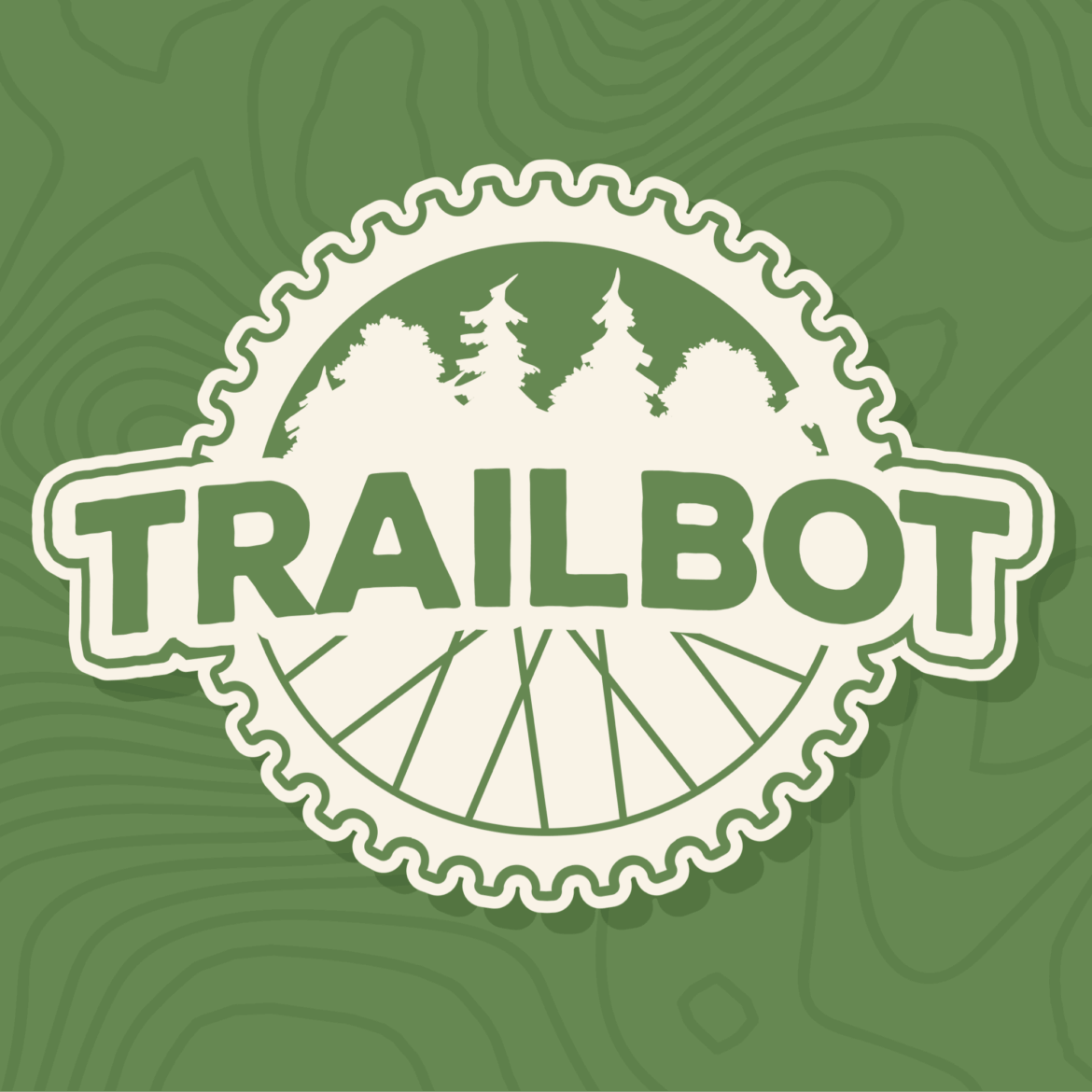

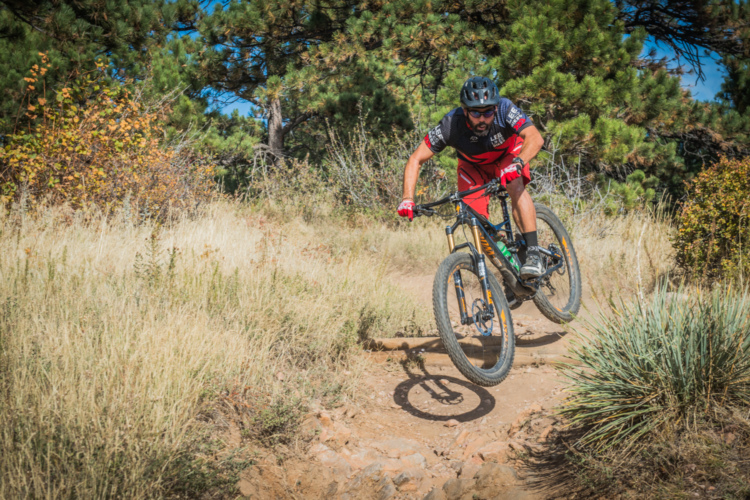
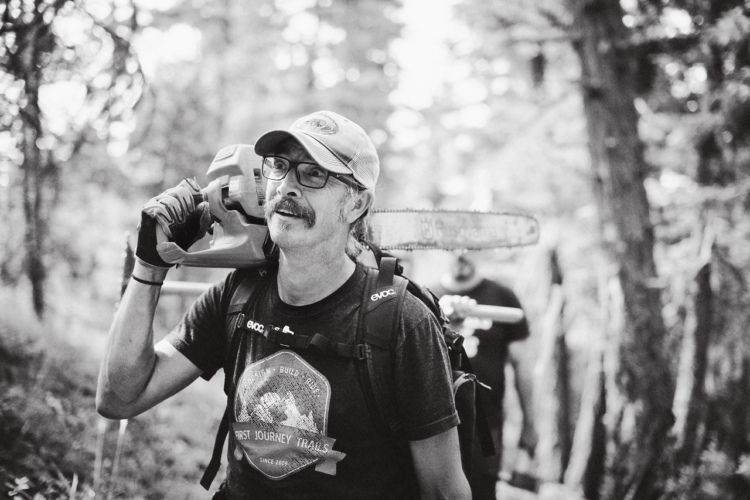

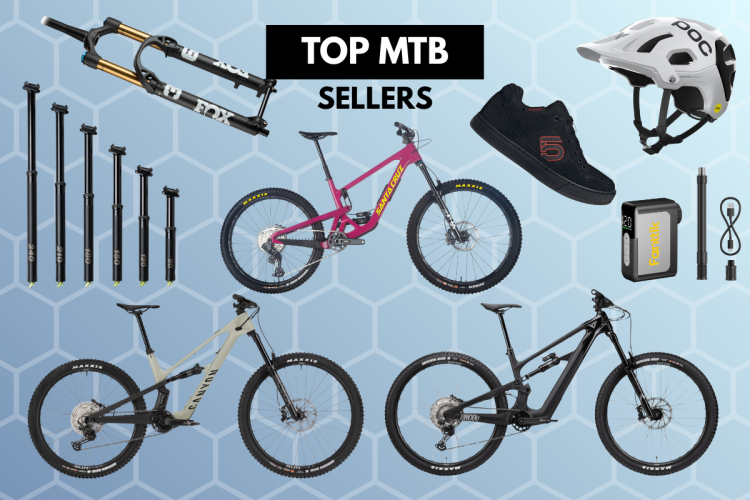
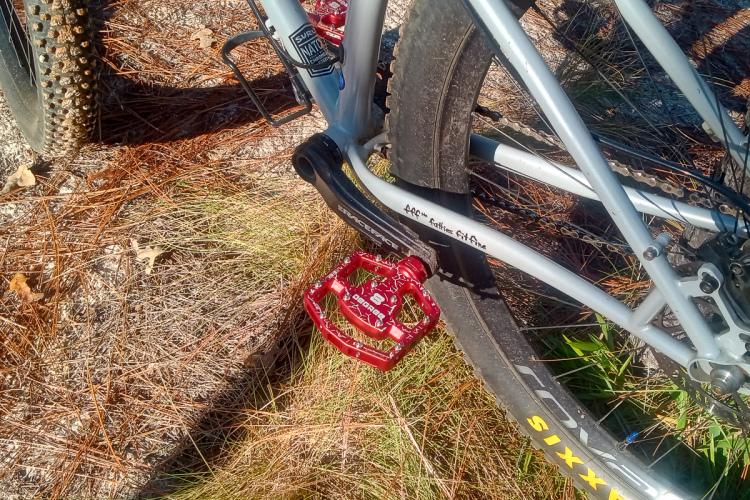
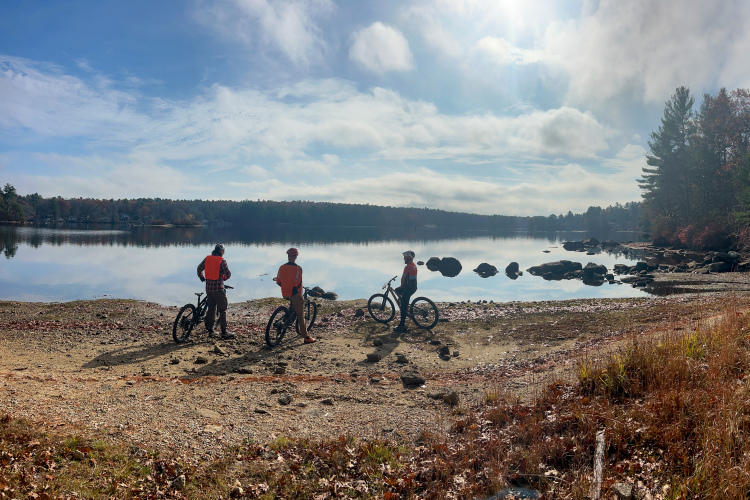
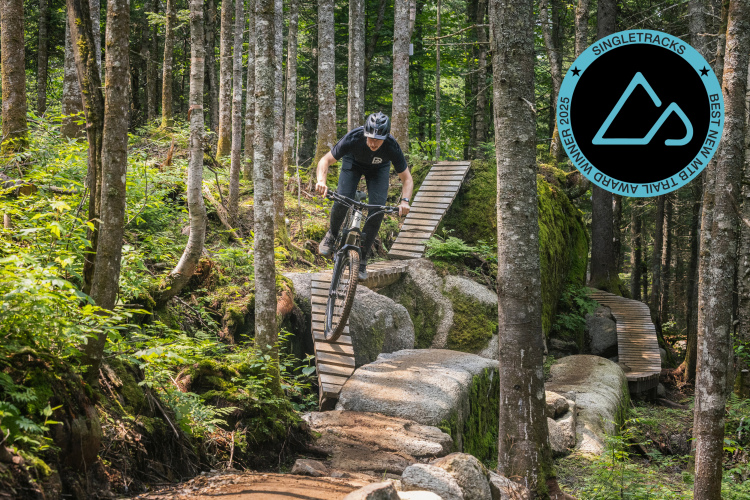

0 Comments